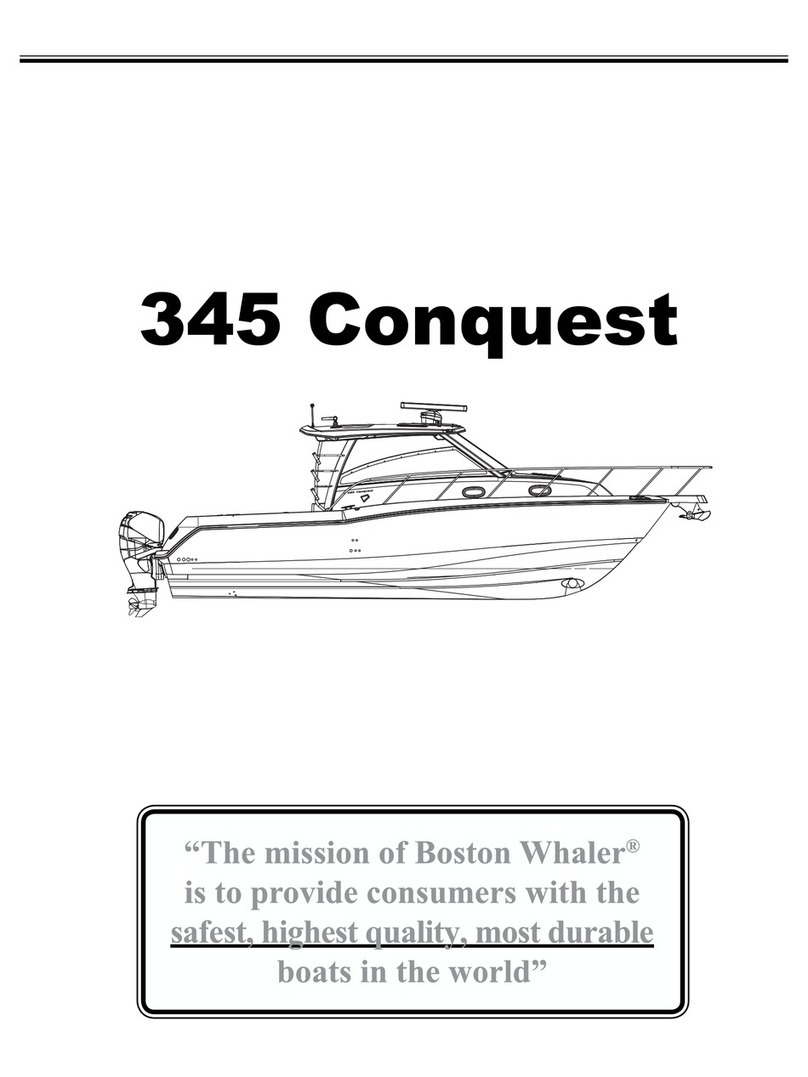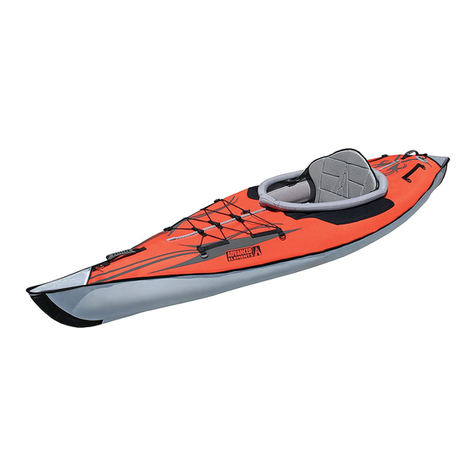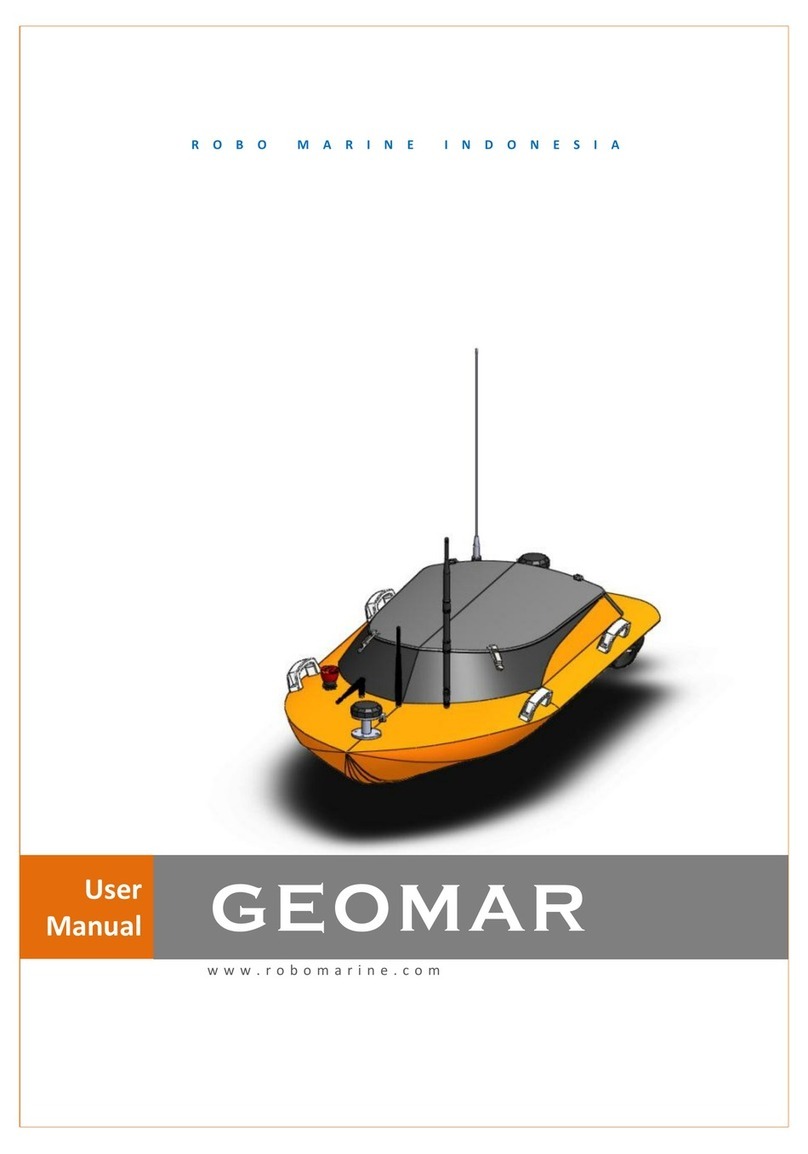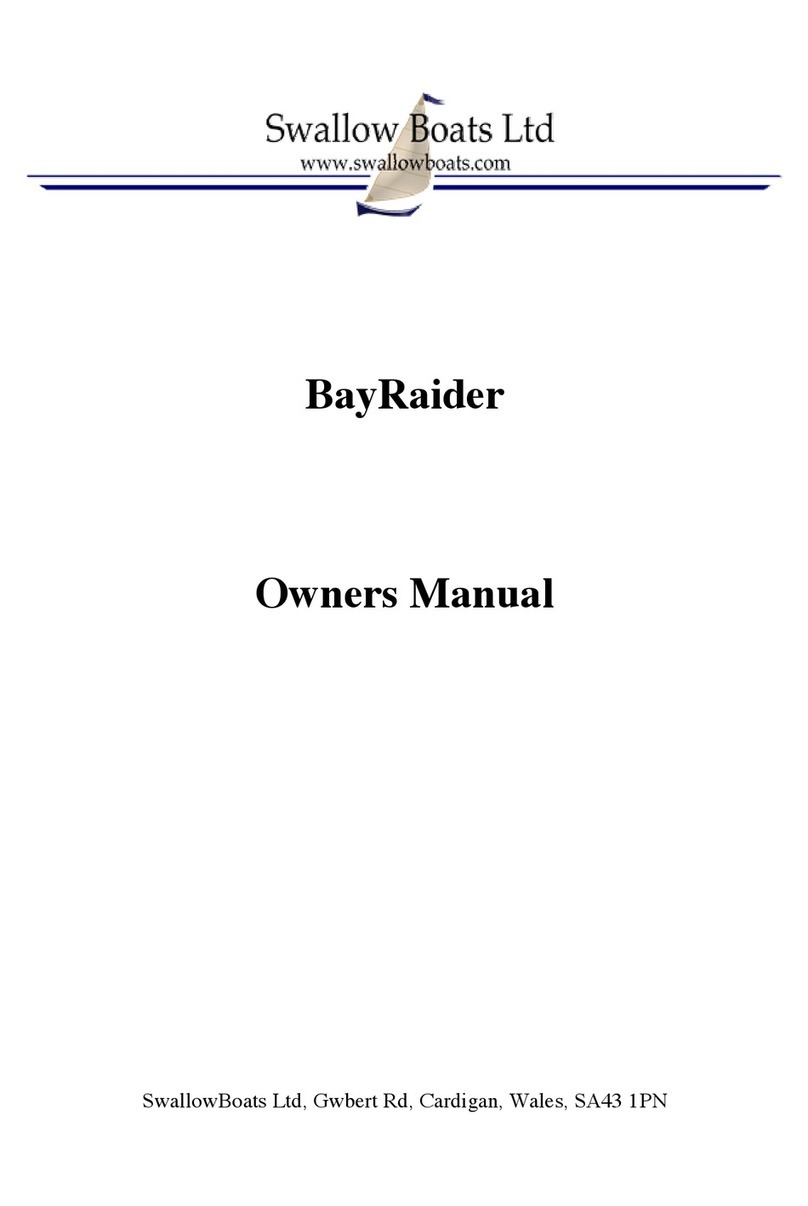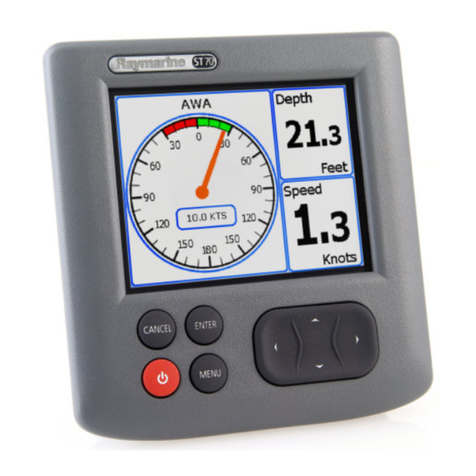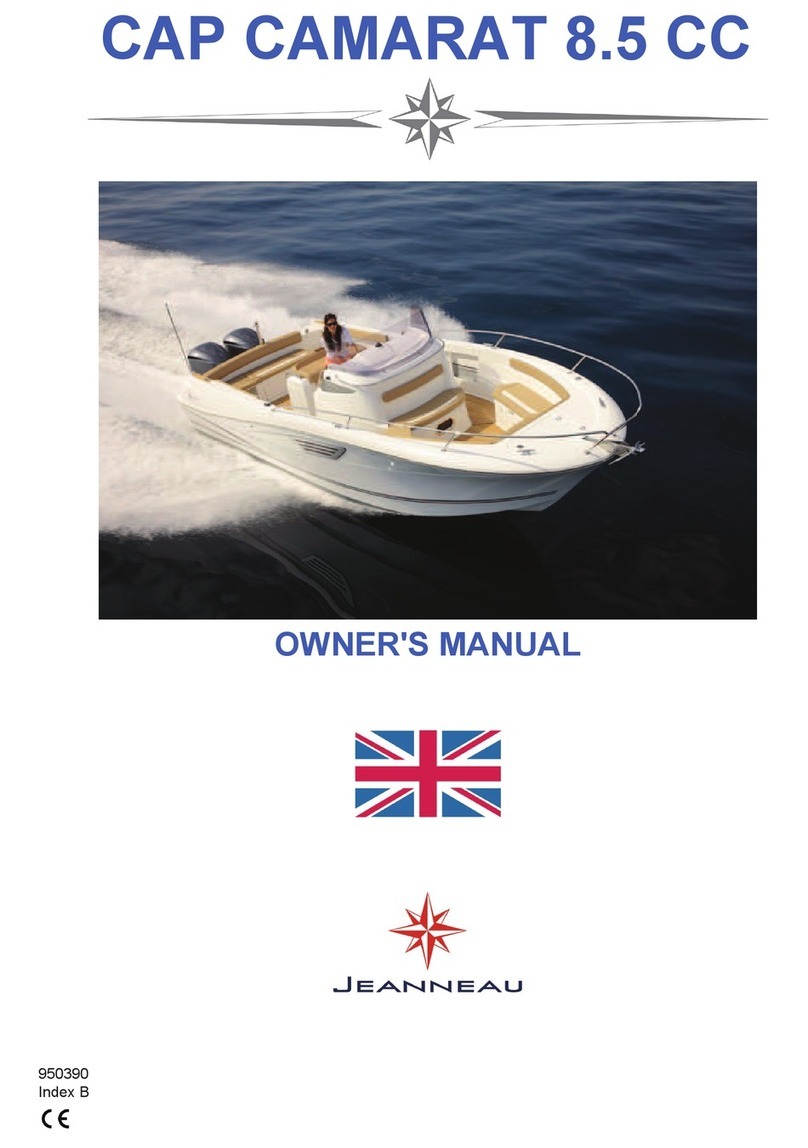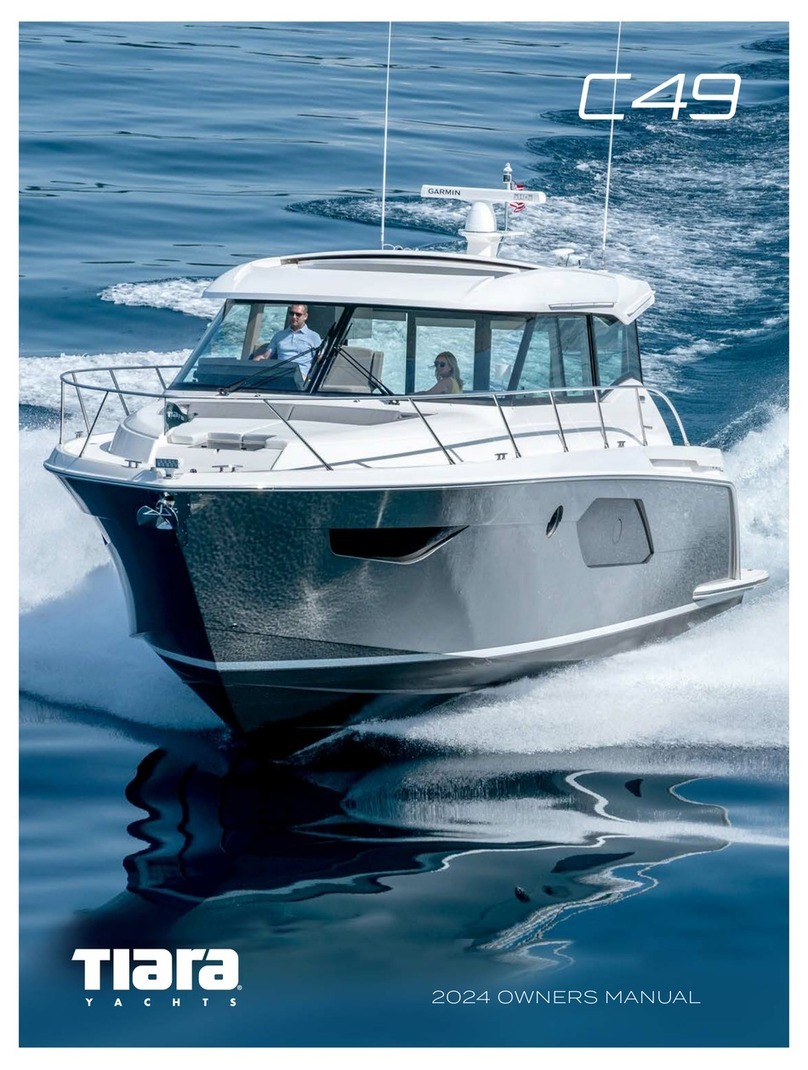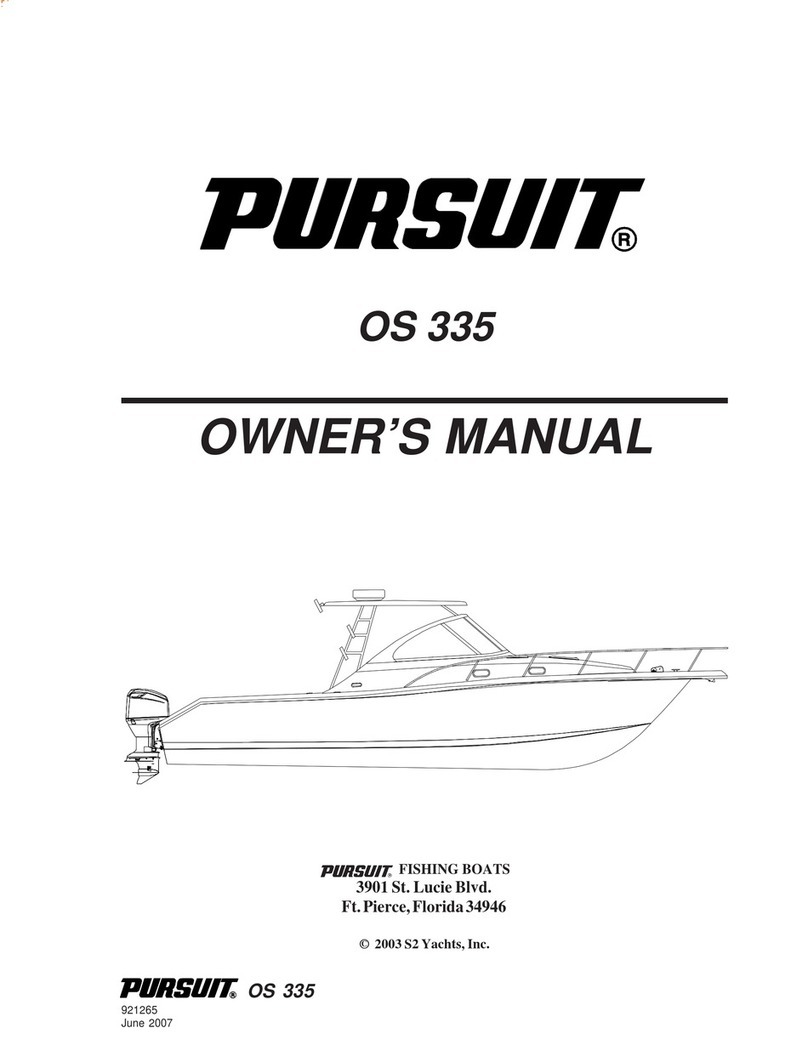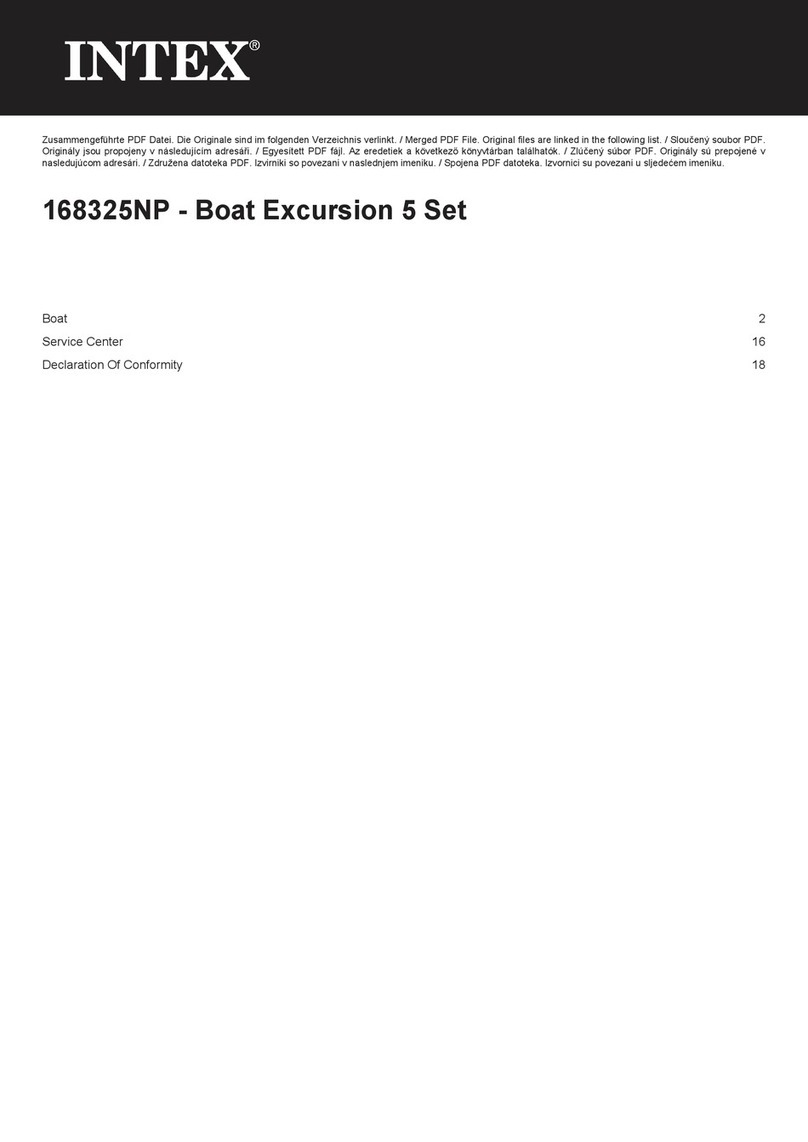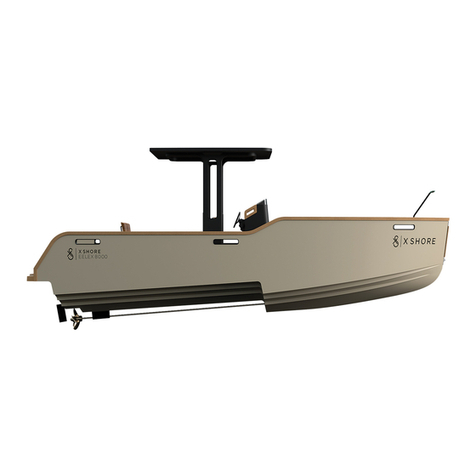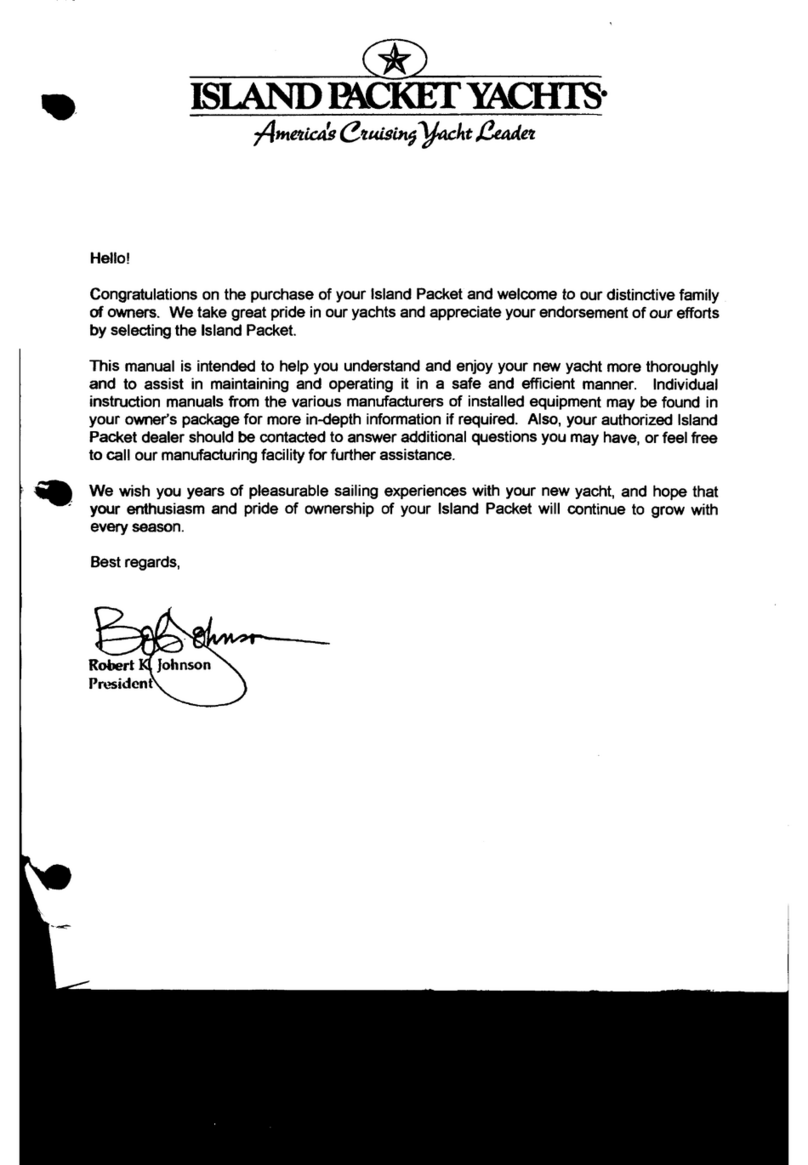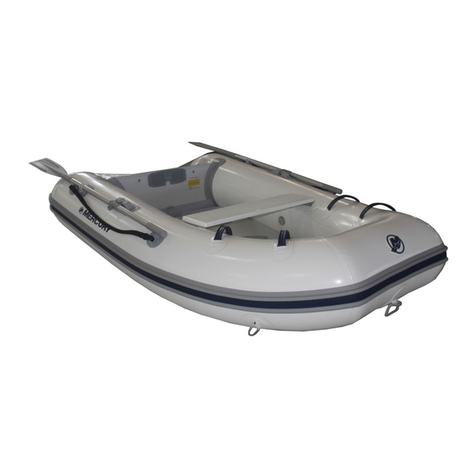
LEAK DETECTION AND REPAIR
Air Leak Detection
If the board is losing air pressure which isn’t caused by cold tempera-
tures, check the board for leaks starting with the valves. A leaking
valve is rare – if this does happen, we will send a replacement. To
find a leak, it is recommended mixing soap and water in a spray
bottle, then spray around the valve. If bubbles appear, check the
valve seating and base to ensure it is screwed tight. If the problems
persist, it is best to get a new valve.
If the board is losing air and there is no issue with the valves, it could
be a small puncture. Spray around the board until air bubbles appear
– mark the position of the leak. If there are no air bubbles, inflate the
board to its maximum capacity and listen for any leaks. If you can
narrow the area of the puncture, spray the board so you can identify
where the leak is.
Repair Kit
Punctures less than 1/8” can be repaired without a patch. Deflate your
board, then clean and dry the area that needs repairing. Apply a small
drop of glue to cover the puncture – let it dry for 12 hours.
If the punctures are bigger, use the patches in the repair kit and follow
these steps:
● Ensure the board is fully deflated, dry and laying flat.
● Cut a patch that is two inches bigger than the tear on all sides.
● Use alcohol to clean the repair area that needs repairing.
● Apply three coats of adhesive to both the patch and board. Wait 5
minutes between each coat.
● Place the patch over the tear – the adhesive will react quickly, so
ensure the positioning is accurate. Use the roller to keep the patch flat
and even.
● Wait 24 hours before inflating the board.
-8-
